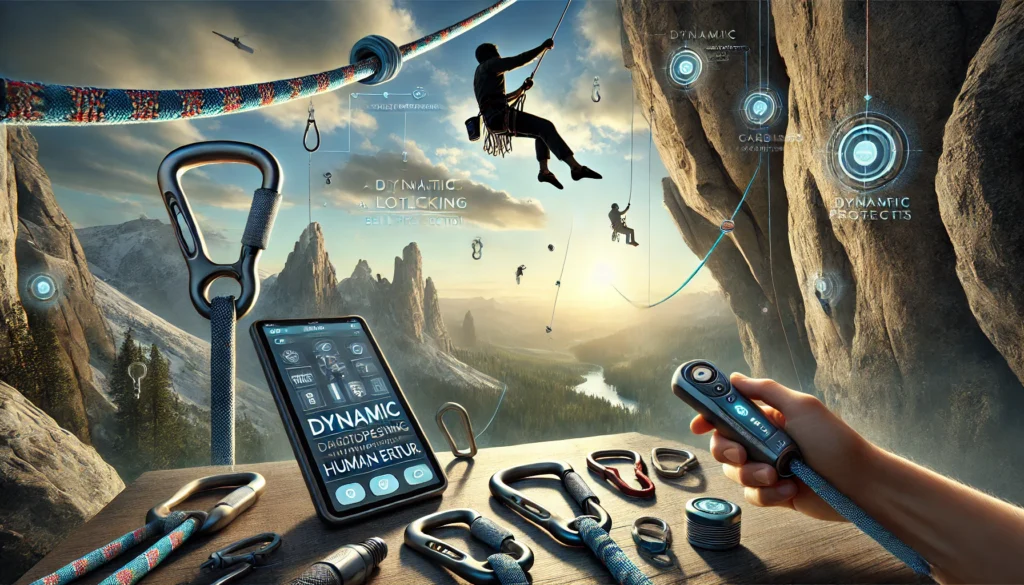Climbing technology has drastically evolved over the past few decades, reshaping the way climbers approach training and outdoor expeditions. Whether you’re a beginner scaling indoor walls or an experienced mountaineer tackling treacherous terrain, climbing technology enhances your experience. These advancements, from high-performance gear to sophisticated tracking devices, allow climbers to push their limits while ensuring their safety.
By integrating innovative materials and smart technologies, climbing products deliver more durability, comfort, and precision. In this article, we’ll explore the world of climbing technology and how it’s helping athletes and adventurers achieve their climbing goals with greater ease and confidence.
The Role of Climbing Technology in Performance
Enhanced Climbing Gear
The most noticeable impact of climbing technology is in the design and development of climbing gear. Items such as climbing ropes, harnesses, helmets, and shoes have undergone significant improvements in both safety and performance. With advancements in material science, these products are now lighter, stronger, and more durable.
For example, modern climbing shoes feature advanced rubber compounds that offer superior grip, allowing climbers to scale walls with better traction. Similarly, high-tech ropes are now equipped with better strength-to-weight ratios, providing climbers with reliability and ease of use.
Another breakthrough has been in the development of multi-purpose harnesses. These versatile harnesses are now designed to provide maximum comfort, flexibility, and support, enhancing climbers’ mobility without compromising safety.
Smart Tracking and Performance Monitoring
Technology has found its way into the climbing world through wearable devices that track a climber’s performance. Smartwatches and fitness trackers now have specialized features that monitor metrics like heart rate, calories burned, elevation, and even the number of routes climbed.
These smart gadgets allow climbers to assess their physical performance during a climb, identify areas for improvement, and track progress over time. Some systems even analyze movement patterns, helping climbers adjust their techniques for better efficiency and strength.
By integrating sensors into climbing equipment, climbers can gain real-time feedback about their performance, ensuring they climb smarter and achieve personal goals faster.
Innovative Rock Climbing Walls and Training Tools
Indoor climbing gyms have embraced climbing technology to create more dynamic and varied experiences for climbers of all levels. Smart climbing walls now have digital interfaces that can simulate different rock formations, adjust difficulty levels, and even track a climber’s progress. This technology enables casual climbers and elite athletes to train more effectively, practicing with the most realistic conditions.
Additionally, climbing training tools, such as fingerboards and hangboards, have evolved to incorporate technology. These devices can track the force a climber exerts on each finger, providing detailed data to help with finger strength training and injury prevention.
How Climbing Technology Improves Safety
Advanced Helmets and Protection Gear
Climbing technology has been key in improving safety measures during climbing activities. Protective equipment such as helmets, pads, and gloves are now built with lightweight yet highly durable materials like carbon fibre and advanced polymers. These materials offer better impact resistance while minimizing the overall weight of the gear.
Helmets, for example, have evolved to provide better ventilation and comfort. They are often designed with integrated headlamps for added convenience. Furthermore, advanced helmet designs now feature more efficient impact absorption systems, providing enhanced protection in case of falls or accidents.
Fall Protection and Belay Systems
Fall protection is critical to climbing safety, and climbing technology continues to improve the devices used for belaying and rappelling. For instance, innovations in auto-locking belay devices have significantly reduced the chances of human error while securing a climber.
Additionally, new dynamic ropes have improved their ability to absorb the shock from a fall, reducing the potential for injury. Some ropes even feature built-in sensors to monitor the climber’s movements and provide real-time alerts if they risk falling.
Newer and more efficient carabiners, quickdraws, and other protective hardware have enhanced safety by providing greater reliability and smoother operation when used in challenging climbing conditions.
GPS and Location Tracking
For climbers who venture into remote, high-altitude areas, technology such as GPS devices and location trackers are invaluable for ensuring safety. These devices allow climbers to stay on course and avoid getting lost during their expeditions. GPS tracking technology can also send distress signals to emergency services in case of an accident, offering an extra layer of security.
Some advanced devices also feature altitude tracking, weather monitoring, and emergency communication features, making them essential for mountaineers and outdoor adventurers.
The Evolution of Climbing Technology in Different Disciplines
Bouldering Technology
In bouldering, climbers face short but intense challenges requiring power and technique. Climbing technology has significantly improved bouldering gear, such as mats and climbing shoes. Using innovative materials in crash pads offers better cushioning and impact resistance, ensuring safer landings after a fall.
Moreover, bouldering shoes have evolved to offer better precision on smaller footholds, giving climbers more control during powerful moves. Performance-enhancing gadgets like smart chalk and grip-enhancing products have also been developed to help climbers achieve better results while reducing the risk of injury.
Sport Climbing and Lead Climbing
Sport climbing and lead climbing involve longer routes with continuous protection, meaning the climber often hangs on the rope while making their way up. In this discipline, climbing technology develops high-performance ropes, harnesses, and belay devices.
Modern ropes, such as dynamic and semi-static, offer superior elasticity and durability, ensuring climbers can make smooth ascents while properly protected. Additionally, advanced belay devices allow for better control when lowering climbers and help with rapid rope management during lead climbing.
Harnesses designed for sport and lead climbing now offer greater comfort for extended use, ensuring that climbers can focus on their climbing without discomfort or distractions.
Ice Climbing
Ice climbing technology is specialized, as it involves scaling frozen waterfalls, glaciers, and ice-covered rock faces. Ice axes and crampons have evolved significantly, with new materials and designs offering better grip and efficiency on icy surfaces.
Modern ice climbing tools feature advanced alloys and coating techniques to ensure they are both durable and lightweight. Ice screws and carabiners designed for icy environments are also engineered to offer a higher degree of reliability and safety during an ice climb.
The Future of Climbing Technology
As the climbing community grows, technology will play an increasingly important role in shaping the sport. One area that holds much promise is integrating augmented reality (AR) and virtual reality (VR) into climbing training. Simulating real-life climbing scenarios allows climbers to practice and perfect their skills before attempting challenging climbs.
Wearable technology is also expected to become more sophisticated. Devices could monitor a climber’s health, track climbing techniques, and predict potential injuries based on real-time data. Additionally, AI-powered tools may assist in route planning, helping climbers find the most efficient path based on environmental factors such as wind speed, temperature, and humidity.
Conclusion
Climbing technology has revolutionized the sport by improving performance, safety, and overall climbing experiences. From advanced gear and training tools to safety features and performance monitoring devices, climbing technology continues to push the boundaries of what is possible. Whether climbing indoors or on a mountain, technology helps you reach new heights while ensuring you stay safe and perform at your best.
As climbing technology continues to evolve, we can expect even more innovations to enhance the climbing experience for athletes and adventurers. The future of climbing is brighter and more exciting than ever before.
FAQs
What is climbing technology?
Climbing technology refers to the tools, equipment, and innovations designed to enhance climbers’ performance, safety, and experience, both indoors and outdoors.
How does climbing technology improve safety?
Climbing technology improves safety through advancements in protective gear, fall protection devices, and real-time tracking systems that help climbers stay secure and informed.
What are some examples of climbing technology?
Examples include smart tracking devices, advanced climbing ropes, high-performance shoes, GPS location trackers, and auto-locking belay devices.
How does technology help in climbing training?
Technology helps in climbing training by providing real-time performance data, smart climbing walls that adjust difficulty, and wearable devices that track heart rate and movement patterns.
Is climbing technology only for experienced climbers?
Not at all! Climbing technology is beneficial for climbers of all skill levels. Whether you’re a beginner or a pro, these tools enhance your climbing experience and help you improve over time.
Will climbing technology continue to evolve?
Yes, climbing technology is constantly evolving. Future innovations, such as AI-powered tools, virtual reality training, and even more advanced climbing gear, will continue to shape the future of the sport.



